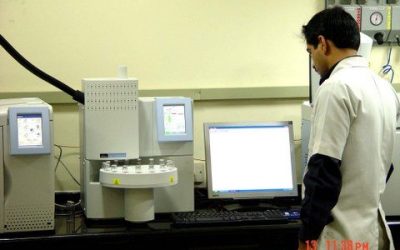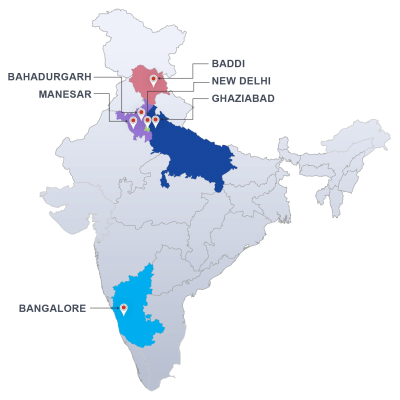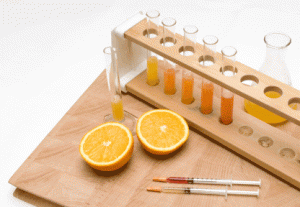Next time you open your refrigerator to take out the packet of dried beans or canned food which you ordered from your grocery store some time back and wonder whether it is apt to consume or not? Just look at the shelf-life label mentioned on the food product. There is a probability that your food product might have crossed its shelf life.
Shelf life is the period between the date of manufacture and date of expiry or best before whichever is earlier as printed on the label.
It is a period during which the food retains an acceptable quality from a safety and organoleptic point of view, and depends on ingredients, processing technique, packaging and storage conditions. It is a vital aspect for both manufacturers and consumers.
How is Shelf life of food determined?
To determine the shelf life of food has always been a gigantic task for foodbusiness operators. When a food exceeds the levels of microbiological contamination, it loses its physical and chemical qualities and changes its organoleptic qualities thereby it confirms that the food product has passed its shelf life and it is no more appropriate to consume.
What affects the shelf life of a food?
The shelf life of food depends on intrinsic and extrinsic factors.
It is indispensable for manufacturers to have knowledge about the formulation of the food when it comes to intrinsic factors like;
- Raw material
- Composition and formulation of the food product
- Water activity
- Total acidity and pH value
- Potential Redox
- Available oxygen
Whereas the extrinsic factors that affect the shelf life of the food depends on the process, packaging and food storage.
- Exposure to sunlight
- Temperature
- Humidity
- Damage to packaging
- Distribution and places of sale
Methods to determine foods’ shelf life
Direct method
This method is apt to estimate the food shelf life of the product.
The Challenge Test
In this test the pathogens or spoilage microorganisms are introduced in the food during the production process to understand the relevant changes in it. However, this method has its limitations and it does not throw light on many other factors which affect the shelf life of food.
Predictive microbiology
This methodology is significantly used for developing a new product as it focuses on microbial response of food items in different environmental conditions. It shows the behaviour of the microorganisms in the food product.
Accelerate shelf-life tests
This test is used to analyse the food’s behaviour in specific conditions with an aim to estimate how the food will evolve in certain storage conditions. In this method temperature, oxygen pressure or moisture content is modified to accelerate spoilage reactions of a food.
What foods have a long Shelf life?
Onions have a shelf life of 1 to 2 months if they are stored in cool, dark and dried places.
Powdered Milk
The manufacturers recommend using powdered milk for 18 months which is best by date. However, it lasts for 2 to 10 years if packed in an airtight container.
Peanut Butter
Astoundingly peanut butter has a long shelf life. In the pantry peanut butter lasts for 6 to 24 months if it is unopened.
Peanuts
If peanuts are stored in a cool and dry place it can remain fresh for 1 to 2 months.
Tea
Dried tea leaves can last for 6 to 12 months in loose or canned containers beyond ‘use by date’.
Canned fruit
Canned fruits have a shelf life of 1 to 2 years past best by date. If canned products are not exposed to intense heat it remains fresh for a long period of time as it is the most effective way to increase the shelf life of food.
Dried beans
Dried beans are non-perishable if kept away from moisture in a dried place.
Freeze dried food
Freeze dried food is beneficial in creating foods which retain its nutrients for a long time. The shelf life of freeze-dried food depends primarily on its storage conditions. It is essential to avoid oxygen, light, moisture and high temperature to keep the food quality intact.
Honey
Honey has an indefinite shelf life however with the passage of time its texture becomes darker and forms sugar crystals. If undiluted honey is kept open in a jar it can stay fresh for decades.
What are the legal requirements for shelf-life?
The Food Safety and Standard Authority of India (FSSAI) recently notified Food Safety and Standards (Imports) Regulation 2017 thereby making it mandatory to obtain a license. FSSAI’s new regulation states that “No article of food shall be cleared from customs unless it has a valid shelf life of not less than 60 per cent at the time of import”.
Now marketers are bound to share the responsibility of the quality and safety of food products. Every product needs to be labelled with expiry or best before dates.
Shelf-life testing of food products in laboratory
We provide shelf-life testing of food products to measure the quality factors and time when it loses its quality. This helps food business operators to provide authentic food products to meet consumers’ expectations and strengthen the brand value of the product.
In turn this will minimise customer complaints and broaden the opportunities to flourish in the food industry. We are experts in shelf-life testing of food products as well as a wide range of different products. Contact us for shelf-life testing of food and excel in your food business.
















